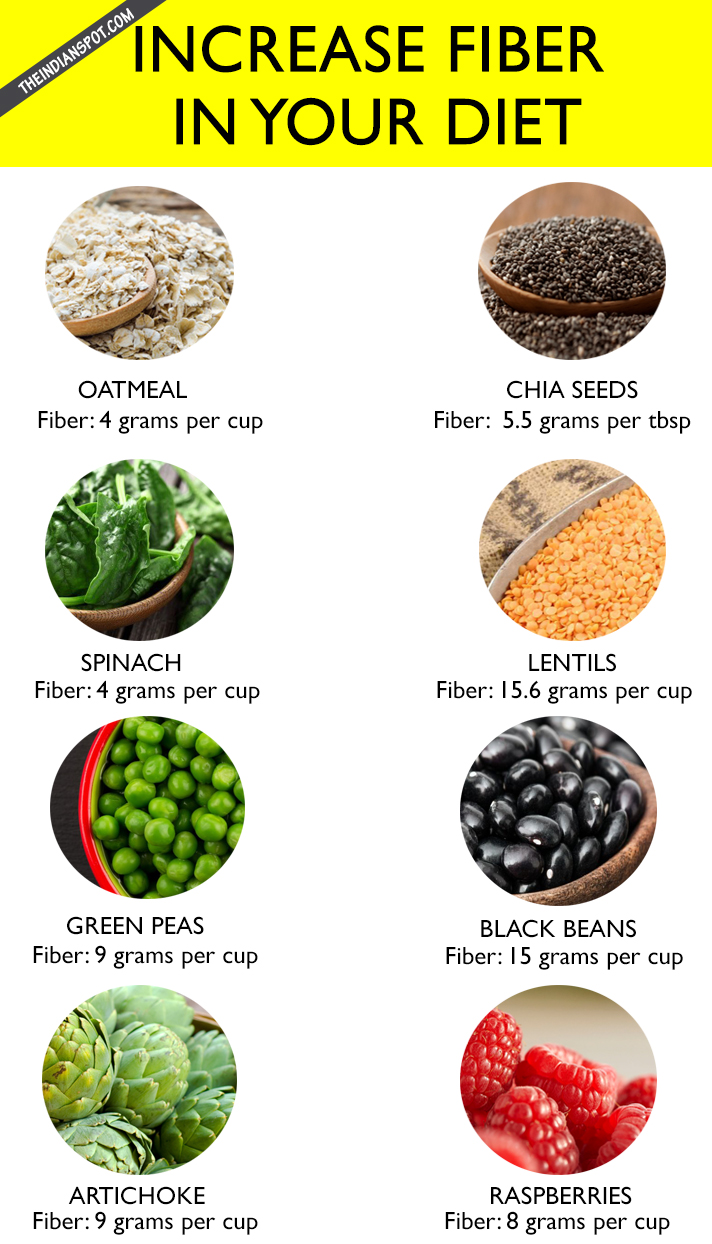Fiber is an important element in your diet just as any other element like minerals, vitamins, protein etc. Fiber is responsible for eliminating unwanted things from the body and lack of fiber results in retention of unwanted stuff in our body! This leads to constipation, dry stool, acidity, heart burn, stomach ache and what not. Fiber is essential for easy metabolism and it also provides roughage. Incorporating high fiber foods can keep constipation at bay and avoid bloating as well as provide detoxification! Here are multiple ways to add in fiber in your diet:

CABBAGE
Cabbage is a vegetable that is often regarded for its fiber content, and used particularly by those looking to lose weight. And while it does contain a respectable amount of fiber, it’s also regarded as an anti-cancer food! Chop it up in thin stripes and add it in your salads, soups, make cabbage wraps etc. More: Foods high in fiber >>
BROCCOLI
In addition to being one of the foods high in fiber, broccoli is also a fantastic source of important vitamins, and even protein. It’s also full of vitamins and minerals, including more Vitamin C per ounce than an orange. Steam it up and add in salads, soups, in tacos, pastas, on pizzas etc.
CHIA SEEDS
Chia seeds are well known for their protein and omega 3 content but did you know that chia seeds also are a great source of fiber? Add them in your oats, soups, veggies, salads, have it with milk, in desserts, smoothies etc.
SPINACH
Spinach not only supplements you with fiber, but also provides plenty of antioxidants and chlorophyll! Buy fresh organic spinach and add it to everything. Cook it or steam it up, make a paste and use it in soups, salads or veggies. Add it in smoothies or use it as a marinate for veggies before grilling.
OATMEAL
Start your day with a cup of cooked oatmeal and you’ll get 4 grams of fiber. Top it with a sliced banana (or better yet, add the banana while you’re cooking the oatmeal — it will add to oatmeal’s creaminess) for an extra 3 grams.
GREEN PEAS
Frozen peas are a quick and easy way to add vegetables to a meal. And they’re particularly high in fiber, with 9 grams per cup.
ARTICHOKE
A single boiled artichoke contains a whopping 10.3 grams of fiber, and you’ll get 7.2 grams of fiber from a half cup of artichoke hearts. Artichokes also are rich in silymarin, an antioxidant that may improve liver health.
KALE
Lettuce ranks the top in hydrating veggies, rather hydrating foods, thanks to its 96% water content. Though, the sad part is that it is not rich in nutrition, but you should have it because it is high in water content and loaded with fiber. Use it in burgers, salads, wraps, smoothies, veggies etc. More: Top leafy green veggies >>
LENTILS
Lentils are kitchen all-stars—they take less time to cook and are more versatile than many other legumes.
RASPBERRIES
Raspberries aren’t a hard sell—they’re basically nature’s candy. With the help of coconut, oatmeal, and vanilla, they make a relatively healthy dessert that pleases any palate.
OPT FOR WHOLE WHEAT BREAD
Opting for whole wheat bread means you’re also getting protein, which means you can simultaneously help yourself reach both your fiber and protein goals for the day. Whole wheat bread should replace white bread in your home or when eating out, not only for the extra fiber it contains, but also because it has fewer calories and carbohydrates. Use it for making sandwiches, toasts, French toasts etc. Use this instead of white bread!